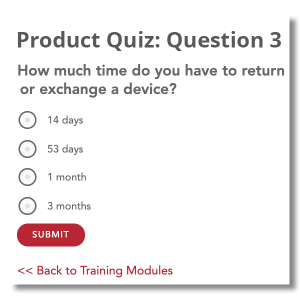If you’re a marketer, it’s a safe bet that doing a content audit is not your idea of a good time. Don’t feel too bad about this; unless your perfect Friday night involves a root canal and a few dozen paper cuts, I don’t expect you to be crazy about content audits, either.
Still, the content audit’s bad reputation exposes a marketing organization to a potentially dangerous problem: The quick-and-dirty content audit.
A quick-and-dirty audit is attractive because, well, it’s quick.
Unfortunately, “dirty” in this case is often an epic mess: inconsistent results, inattention to detail and a grim determination to pretend the grease fire you’re about to start is perfectly fine, everything went great, thanks for asking!
If you’re outside of a content audit looking in, this may not look as bad as it really is — at least, not at first. Sooner or later, though, you’ll discover your content audit results — the ones your team uses to plan campaigns and make spending decisions and generally not get fired — just might be the handiwork of somebody who was in a big, big hurry to go do absolutely anything else.
Fortunately, there’s a quick and easy way to tell if a content audit is working hard or hardly working.
If one of these holds true for an audit you’re concerned about, it’s time to take a much closer look at your content audit goals, processes, resources and outcomes. If more than one applies, be prepared for a demolition job.
1. The only thing you have to show for a content audit is . . . a content audit. Every content audit should yield two deliverables: a spreadsheet packed with asset-by-asset assessment data and a PowerPoint deck packed with informative charts, graphs and insights your boss (and your boss’s boss, and perhaps their boss) can review and understand at a glance.
That second deliverable just might save your budget, or even your job, in a pinch. I’m nearly certain it will help you win internal arguments over spending, staffing and strategy that you might have lost otherwise. (A majority of our clients use the audit playbooks we prepare for them for exactly this purpose.)
The catch, of course, is having the right kind of audit data to give you those drop-the-mike insights, as well as the confidence to present those insights to people who can turn your career into a grease spot. If the person(s) who conducted the audit turn into excuse-spouting procrastination machines when you request this deliverable, start asking hard questions sooner rather than later.
2. Your audit documentation fits on the back of a cocktail napkin. A content audit without a totally consistent, repeatable and teachable process isn’t a content audit — it’s an intern hazing ritual.
A better question to ask, though, is whether a marketing team has a documented content audit process. If the answer is no, you don’t have to worry about “consistent, repeatable and teachable,” because whatever you’re calling a content audit won’t be burdened with any of those particular qualities.
Maybe someday I’ll see a marketing organization that can pass down this knowledge effectively without having to document it — like a bunch of shamans in khakis, handing down the tribal wisdom. But I doubt it.

3. Your audit process is so simple any idiot could do it. Let’s start with this observation: A content inventory is not the same thing as a content audit. An inventory is entirely objective and very simple to do; you could (and a number of companies do) use software to automate the process of creating one. Think title, size/length, publication date and the like. (Check out our previous blog post for more about the difference between an inventory and an audit.)
A content audit will include elements of an inventory, but it also covers subjective criteria that demand specialized knowledge, judgment and a grasp of nuance. If your audit process, for example, evaluates content in terms of a buyer’s journey model, persona alignment, repurposing potential and the like, then as far as I’m concerned, you’re on the right track.
Getting all of this right, by the way, means staffing an audit with skilled personnel who can grasp these concepts and apply them consistently — even though most audit projects are filled with curveballs and oddball content assets. If your audit team can’t navigate these hazards largely on their own (with proper training), reassign the interns and put your A-team on this project.
4. Your audit process isn’t paying for itself. That not-so-simple process I just discussed has many uses, but let’s talk about one: unleashing the latent value within your content library.
Simply put, a well-designed audit makes it much easier to plug existing content into new campaigns. Content that was previously used just once — if it was used at all — might now appear (given some clever repurposing) in a whole series of projects.
Every time that happens, you save the money and resources previously used to create new content you didn’t really need. Better yet, you don’t get stuck adding a redundant asset to your content library — a commonplace yet incredibly wasteful mistake.
Don’t overthink how to find this red flag. Simply ask your campaign managers if they use content audit data and whether they find it valuable. If the answers you hear don’t sound a lot like “yes!” and “hell, yes!” you’ve got a problem to deal with somewhere.
Trust me, though — a broken content audit process, including one where “quick and dirty” runs amok, is always a problem worth fixing. Given that a new, long-form content asset can cost several thousand dollars, if a content audit is even modestly successful on this level, it will pay for itself in short order.
It all comes down to having a content audit process you can rely on to deliver those benefits. I can’t promise you’ll have a good time making that happen, but you’ll definitely enjoy the results.
Business & Finance Articles on Business 2 Community(37)
Report Post





